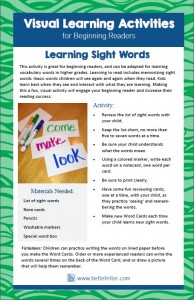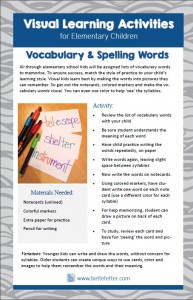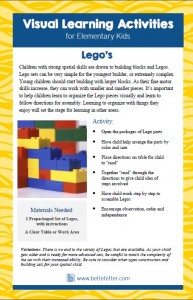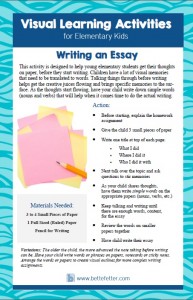Fun and Free Teaching Tools
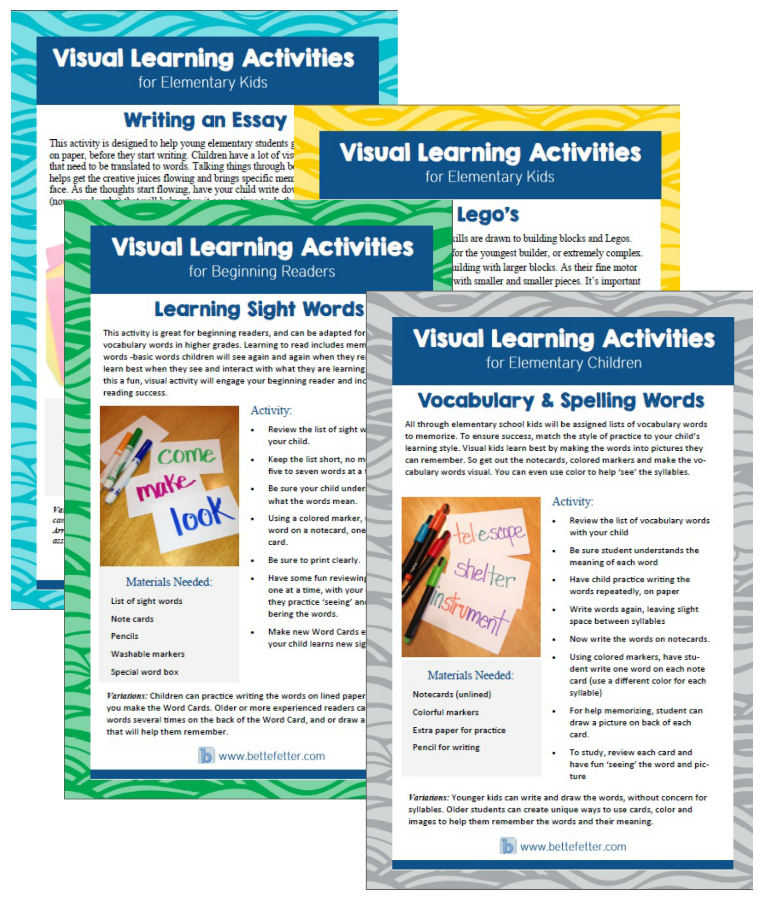 When you child enters elementary school they will experience more sitting still, left brain, language oriented learning and much less hands on learning. For visual learners, seeing is learning. They need to have a picture to commit to memory when learning new concepts and they often need help organizing their thoughts. We want to help you help your child operate successfully in the classroom and have designed these activities (free downloads) with your visual learner in mind. I have created some great visual ways for your child to learn sight words and spelling words, organize their larger writing projects and work on visual organization.
When you child enters elementary school they will experience more sitting still, left brain, language oriented learning and much less hands on learning. For visual learners, seeing is learning. They need to have a picture to commit to memory when learning new concepts and they often need help organizing their thoughts. We want to help you help your child operate successfully in the classroom and have designed these activities (free downloads) with your visual learner in mind. I have created some great visual ways for your child to learn sight words and spelling words, organize their larger writing projects and work on visual organization.
